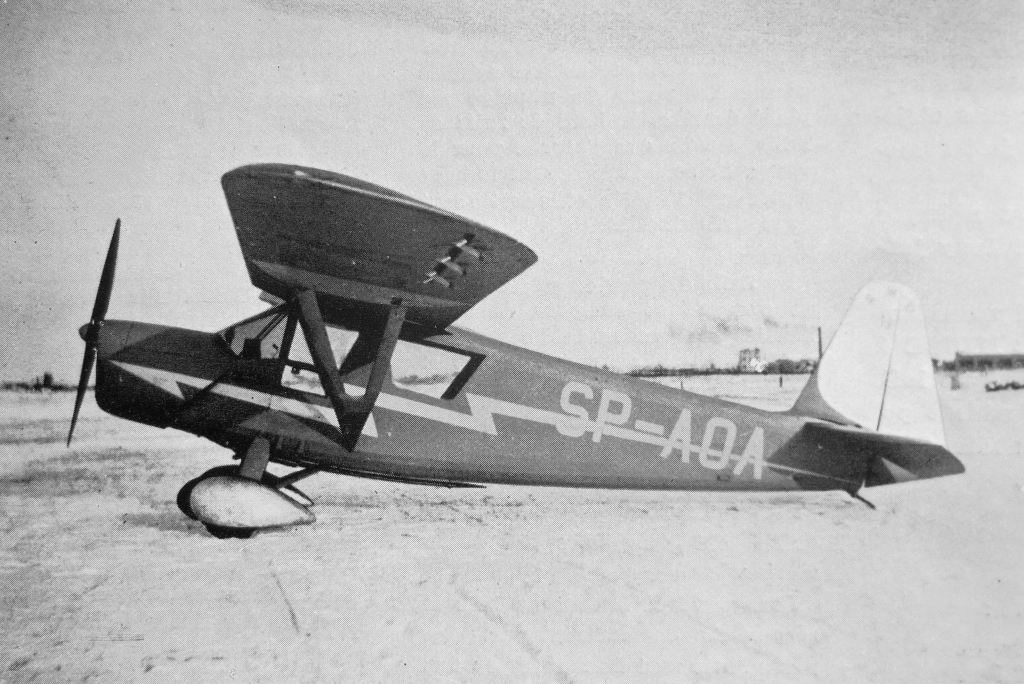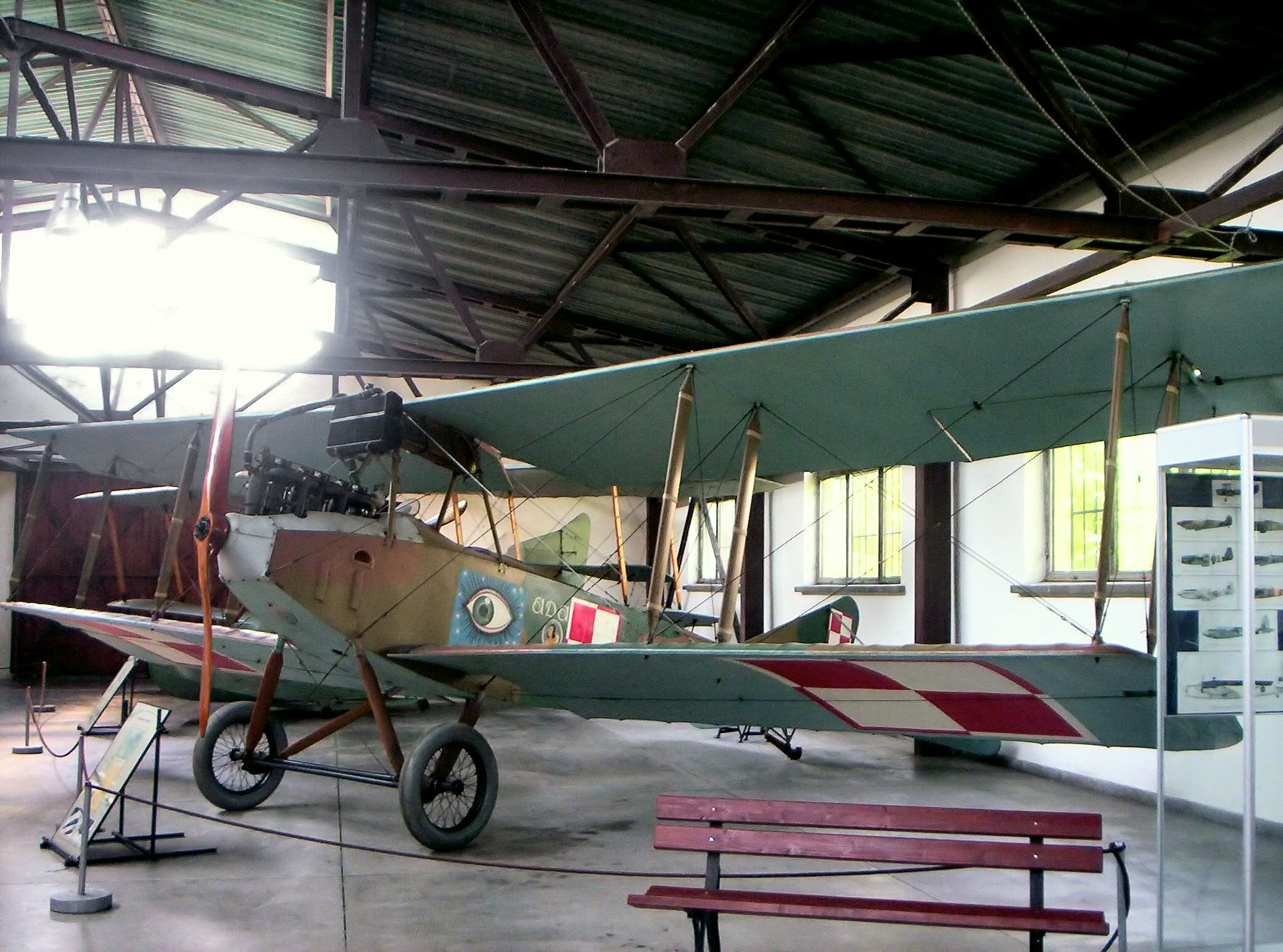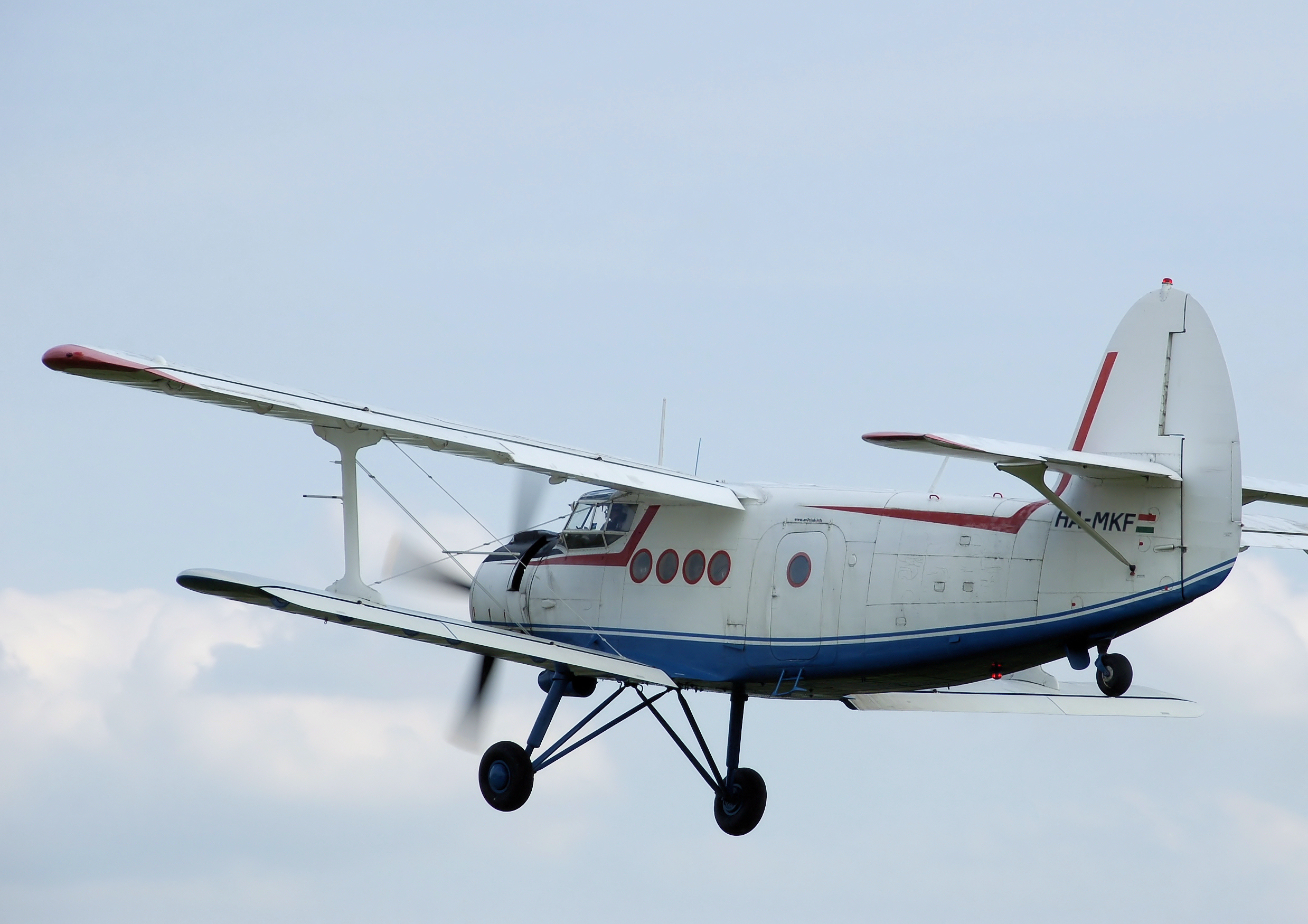|
RWD 13
The RWD 13 was a Polish touring plane of 1935, three-seater high-wing monoplane, designed by the RWD team. It was the biggest commercial success of the RWD. Development The RWD 13 was a touring plane, developed from a line of sports planes RWD 6 (a winner of Challenge 1932 international touring aircraft contest) and RWD 9 (a winner of Challenge 1934). It was designed by Stanisław Rogalski and Jerzy Drzewiecki of the RWD team, in the DWL workshops ('' Doświadczalne Warsztaty Lotnicze'') in Warsaw, for and order of the LOPP paramilitary organization. The prototype was constructed using parts of a broken up RWD 6 (initially it was even supposed to be designated RWD 6bis), but its construction was more similar to newer RWD 9. It first flew on 15 January 1935 (registration SP-AOA). Since the RWD 13 was not supposed to be a competition aircraft, the main differences from the RWD 9 were: an inline engine with lower power output, instead of a radial engine, and simpler wing me ... [...More Info...] [...Related Items...] OR: [Wikipedia] [Google] [Baidu] |
Polish Aviation Museum
The Polish Aviation Museum ( pl, Muzeum Lotnictwa Polskiego w Krakowie) is a large museum of historic aircraft and aircraft engines in Kraków, Poland. It is located at the site of the no-longer functional Kraków-Rakowice-Czyżyny Airport. This airfield, established by Austria-Hungary in 1912, is one of the oldest in the world. The museum opened in 1964, after the airfield closed in 1963. Has been scored as eighth world's best aviation museum by CNN. For the first half century of its existence the museum used four hangars of the former airfield to display its exhibits. These buildings were not originally designed for this purpose and suffered from various inadequacies, notably insufficient heating in winter. The situation improved when a new main building for the museum opened on 18 September 2010. Collection The collection consists of over 200 aircraft as of 2005. Several of the aircraft displayed are unique on the world scale, including sailplanes and some 100 ... [...More Info...] [...Related Items...] OR: [Wikipedia] [Google] [Baidu] |
Radial Engine
The radial engine is a reciprocating type internal combustion engine configuration in which the cylinders "radiate" outward from a central crankcase like the spokes of a wheel. It resembles a stylized star when viewed from the front, and is called a "star engine" in some other languages. The radial configuration was commonly used for aircraft engines before gas turbine engines became predominant. Engine operation Since the axes of the cylinders are coplanar, the connecting rods cannot all be directly attached to the crankshaft unless mechanically complex forked connecting rods are used, none of which have been successful. Instead, the pistons are connected to the crankshaft with a master-and-articulating-rod assembly. One piston, the uppermost one in the animation, has a master rod with a direct attachment to the crankshaft. The remaining pistons pin their connecting rods' attachments to rings around the edge of the master rod. Extra "rows" of radial cylinders can be ... [...More Info...] [...Related Items...] OR: [Wikipedia] [Google] [Baidu] |
Empennage
The empennage ( or ), also known as the tail or tail assembly, is a structure at the rear of an aircraft that provides stability during flight, in a way similar to the feathers on an arrow.Crane, Dale: ''Dictionary of Aeronautical Terms, third edition'', p. 194. Aviation Supplies & Academics, 1997. Aviation Publishers Co. Limited, ''From the Ground Up'', p. 10 (27th revised edition) The term derives from the French language verb ''empenner'' which means " to feather an arrow". Most aircraft feature an empennage incorporating vertical and horizontal stabilising surfaces which stabilise the flight dynamics of yaw and pitch, as well as housing control surfaces. In spite of effective control surfaces, many early aircraft that lacked a stabilising empennage were virtually unflyable. Even so-called " tailless aircraft" usually have a tail fin (usually a vertical stabiliser). Heavier-than-air aircraft without any kind of empennage (such as the Northrop B-2) are rare, and generally ... [...More Info...] [...Related Items...] OR: [Wikipedia] [Google] [Baidu] |
Leading Edge Slats
Slats are aerodynamic surfaces on the leading edge of the wing of a fixed-wing aircraft which, when deployed, allow the wing to operate at a higher angle of attack. A higher coefficient of lift is produced as a result of angle of attack and speed, so by deploying slats an aircraft can fly at slower speeds, or take off and land in shorter distances. They are used during takeoff and landing or while performing low speed maneuvers which may take the aircraft close to a stall, they are retracted in normal flight to minimize drag. Slats are one high-lift device used on high speed turbojet aircraft, trailing edge flap systems running along the trailing edge of the wing are common on all aircraft. Types Types include: ;Automatic: The spring-loaded slat lies flush with the wing leading edge, held in place by the force of the air acting on them. As the aircraft slows down, the aerodynamic force is reduced and the springs extend the slats. Sometimes referred to as Handley-Page sla ... [...More Info...] [...Related Items...] OR: [Wikipedia] [Google] [Baidu] |
Aluminium
Aluminium (aluminum in AmE, American and CanE, Canadian English) is a chemical element with the Symbol (chemistry), symbol Al and atomic number 13. Aluminium has a density lower than those of other common metals, at approximately one third that of steel. It has a great affinity towards oxygen, and Passivation (chemistry), forms a protective layer of Aluminium oxide, oxide on the surface when exposed to air. Aluminium visually resembles silver, both in its color and in its great ability to reflect light. It is soft, Magnetism, non-magnetic and ductility, ductile. It has one stable isotope, 27Al; this isotope is very common, making aluminium the twelfth most common element in the Universe. The radioactivity of Aluminum-26, 26Al is used in Radiometric dating, radiodating. Chemically, aluminium is a post-transition metal in the boron group; as is common for the group, aluminium forms compounds primarily in the +3 oxidation state. The aluminium cation Al3+ is small and h ... [...More Info...] [...Related Items...] OR: [Wikipedia] [Google] [Baidu] |
Canvas
Canvas is an extremely durable plain-woven fabric used for making sails, tents, marquees, backpacks, shelters, as a support for oil painting and for other items for which sturdiness is required, as well as in such fashion objects as handbags, electronic device cases, and shoes. It is popularly used by artists as a painting surface, typically stretched across a wooden frame. Modern canvas is usually made of cotton or linen, or sometimes polyvinyl chloride (PVC), although historically it was made from hemp. It differs from other heavy cotton fabrics, such as denim, in being plain weave rather than twill weave. Canvas comes in two basic types: plain and duck. The threads in duck canvas are more tightly woven. The term ''duck'' comes from the Dutch word for cloth, ''doek''. In the United States, canvas is classified in two ways: by weight (ounces per square yard) and by a graded number system. The numbers run in reverse of the weight so a number 10 canvas is lighter th ... [...More Info...] [...Related Items...] OR: [Wikipedia] [Google] [Baidu] |
Monoplane
A monoplane is a fixed-wing aircraft configuration with a single mainplane, in contrast to a biplane or other types of multiplanes, which have multiple planes. A monoplane has inherently the highest efficiency and lowest drag of any wing configuration and is the simplest to build. However, during the early years of flight, these advantages were offset by its greater weight and lower manoeuvrability, making it relatively rare until the 1930s. Since then, the monoplane has been the most common form for a fixed-wing aircraft. Characteristics Support and weight The inherent efficiency of the monoplane is best achieved in the cantilever wing, which carries all structural forces internally. However, to fly at practical speeds the wing must be made thin, which requires a heavy structure to make it strong and stiff enough. External bracing can be used to improve structural efficiency, reducing weight and cost. For a wing of a given size, the weight reduction allows it to fly slower a ... [...More Info...] [...Related Items...] OR: [Wikipedia] [Google] [Baidu] |
Strut
A strut is a structural component commonly found in engineering, aeronautics, architecture and anatomy. Struts generally work by resisting longitudinal compression, but they may also serve in tension. Human anatomy Part of the functionality of the clavicle is to serve as a strut between the scapula and sternum, resisting forces that would otherwise bring the upper limb close to the thorax. Keeping the upper limb away from the thorax is vital for its range of motion. Complete lack of clavicles may be seen in cleidocranial dysostosis, and the abnormal proximity of the shoulders to the median plane exemplifies the clavicle's importance as a strut. Architecture and construction Strut is a common name in timber framing for a support or brace of scantlings lighter than a post. Frequently struts are found in roof framing from either a tie beam or a king post to a principal rafter. Struts may be vertically plumb or leaning (then called canted, raking, or angled) and may be straight ... [...More Info...] [...Related Items...] OR: [Wikipedia] [Google] [Baidu] |
Rogožarski
Rogožarski () was a Yugoslav aircraft manufacturer. History Officially established on 22 April 1924 under the name of ''Prva Srpska Fabrika Aeroplana Živojin Rogožarski'' ( en, First Serbian Aircraft Factory of Živojin Rogožarski), the factory was responsible along with Ikarus for most of Yugoslavia's air industry between the world wars. Initially, the factory repaired aircraft confiscated in the First World War, and soon started to manufacture local aircraft, and licensed manufacture as well. Nationalised in 1946, the factory was merged along with Zmaj into Ikarus which continued in the aeronautical industry until 1962. The factory Rogožarski has made a total of 286 aircraft. Aircraft See also * Aircraft industry of Serbia Kingdom of Serbia became part of the new state, Kingdom of the Serbs, Croats and Slovenes. which was formed on 1 December 1918. Even though the industry was on a very low level of development, the state was among the first 10 countries in ... [...More Info...] [...Related Items...] OR: [Wikipedia] [Google] [Baidu] |
RWD 15
The RWD-15 was a Polish touring aircraft of 1937, designed by the RWD team and built by the Doświadczalne Warsztaty Lotnicze (DWL). Design and development The RWD-15 was an enlarged development of the RWD-13 three-seat touring aircraft, designed by Stanisław Rogalski of the RWD team, in the DWL workshops in Warsaw. The prototype first flew in spring 1937 (registration SP-BFX). It inherited RWD-13's advantages, like ease of flying, with good stability. In 1939, five aircraft were produced by the outbreak of World War II. A series of 10 RWD-15 was ordered by the Polish Air Force as liaison aircraft in 1939, but they were not completed before the war. Only one of five ordered air ambulances RWD-15S, with two stretchers, were built. There was proposed an aerial photography variant, but it was not built. Description Five-seater touring strutted high-wing monoplane of mixed construction. Fuselage frame was metal, covered with canvas, the engine section covered with aluminium she ... [...More Info...] [...Related Items...] OR: [Wikipedia] [Google] [Baidu] |
Stretchers
A stretcher, gurney, litter, or pram is an apparatus used for moving patients who require medical care. A basic type (cot or litter) must be carried by two or more people. A wheeled stretcher (known as a gurney, trolley, bed or cart) is often equipped with variable height frames, wheels, tracks, or skids. Stretchers are primarily used in acute out-of-hospital care situations by emergency medical services (EMS), military, and search and rescue personnel. In medical forensics the right arm of a corpse is left hanging off the stretcher to let paramedics know it is not a wounded patient. They are also used to hold prisoners during lethal injections in the United States. History An early stretcher, likely made of wicker over a frame, appears in a manuscript from . Simple stretchers were common with militaries right through the middle of the 20th century. Gurney Generally spelled ''gurney'', but also ''guerney'' or ''girney''. The first usage of the term for a wheeled stretcher ... [...More Info...] [...Related Items...] OR: [Wikipedia] [Google] [Baidu] |
Air Ambulance
Air medical services is a comprehensive term covering the use of air transportation, aeroplane or helicopter, to move patients to and from healthcare facilities and accident scenes. Personnel provide comprehensive prehospital and emergency and critical care to all types of patients during aeromedical evacuation or rescue operations aboard helicopter and propeller aircraft or jet aircraft. The use of air transport to provide medical evacuation on the battlefield dates to World War I, but its role was expanded dramatically during the Korean and Vietnam wars. Later on, aircraft began to be used for the civilian emergency medical services. Helicopters can bring specialist care to the scene and transport patients to specialist hospitals, especially for major trauma cases. Fixed-wing aircraft are used for long-distance transport. In some remote areas, air medical services deliver non-emergency healthcare such as general practitioner appointments. An example of this is the Royal ... [...More Info...] [...Related Items...] OR: [Wikipedia] [Google] [Baidu] |










-SchweizerischeRettungsflugwacht.jpg)